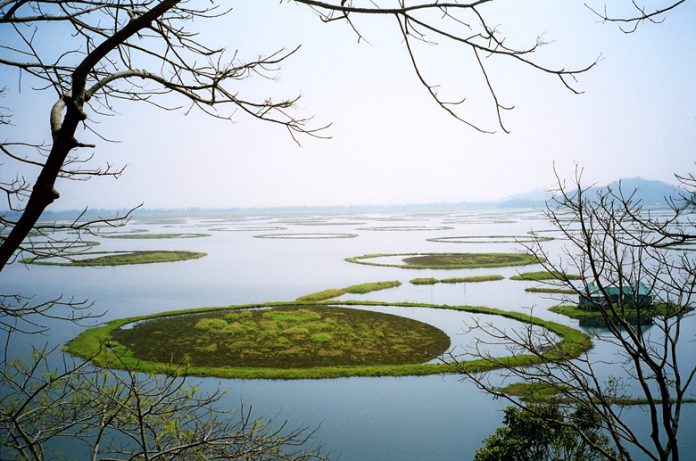The wetlands of Kashmir are invaluable ecosystems that serve as habitats for diverse species, support local livelihoods, and play a crucial role in water purification and flood control. However, recent findings reported by the CPCB to the NGT reveal alarming degradation of these vital areas. The water quality of nine wetlands in Kashmir does not meet the criteria for Class B Designated Best Use, which includes standards for fishing, swimming, recreation, and healthy aquatic habitats. This dire situation demands immediate and concerted efforts from all stakeholders to prevent further environmental decline. The confusion over the exact number of Ramsar sites in Kashmir, as highlighted by the NGT, underscores a significant gap in environmental governance. The MoEF and the CPCB provided conflicting reports on the number of Ramsar sites, which are wetlands of international importance under the Ramsar Convention. Such discrepancies point to a broader issue of inadequate data management and coordination among environmental bodies. Without precise and reliable data, effective policy-making and conservation efforts are severely hampered. This is indeed an embarrassing moment that requires the immediate attention of the authorities.
Wetlands in Kashmir, including the well-known Wular Lake, Dal Lake, and Hokarsar Wetland, are crucial for maintaining ecological balance. They support a rich biodiversity, including migratory birds, fish, and other aquatic life. These wetlands act as natural water purifiers, filtering pollutants and sediments from the water, thus maintaining water quality and supporting agricultural activities in the region. The degradation of these wetlands, as indicated by elevated levels of Biochemical Oxygen Demand and pH, is a clear sign of pollution and ecological stress. Factors contributing to this deterioration include unchecked sediment deposits, illegal encroachments, waste discharge, and elevated temperatures. Such conditions not only threaten aquatic life but also impact the livelihoods of local communities that depend on these ecosystems for fishing and agriculture.
The CPCB has assured the NGT that corrective actions will be initiated within two months, following a detailed collection of necessary information. While this is a positive step, the urgency of the situation requires a multi-faceted approach involving local, state, and national agencies. Key actions should include accurate and updated mapping of all wetlands in Kashmir, which is crucial. This includes delineating the boundaries of Ramsar sites and other wetlands and establishing a robust monitoring system to track changes in water quality and ecological health. There must be stringent enforcement of existing environmental laws and regulations to prevent illegal encroachments and pollution. Local bodies need to be empowered and held accountable for managing and protecting wetland areas. Initiatives could include community-based monitoring programmes and sustainable livelihood projects that align with conservation goals. Active restoration projects are needed to rehabilitate degraded wetlands. This could involve removing invasive species, replanting native vegetation, and improving water management practices to enhance natural hydrological functions.
Collaboration between scientific institutions, environmental organisations, and Government agencies is essential to generating and sharing data on wetland health. Research should focus on understanding the impacts of climate change, pollution, and human activities on these ecosystems. The confusion regarding the number of Ramsar sites by the concerned departments calls for greater accountability and transparency in environmental governance. Clear, consistent, and publicly accessible information about the status of wetlands is vital for effective management. The NGT’s directive for respondents to provide detailed reports within eight weeks is a step in the right direction, but it must be followed by continuous and regular updates to the public.
The degradation of Kashmir’s wetlands is a pressing environmental issue that cannot be ignored. These ecosystems are integral to the region’s biodiversity, economy, and cultural heritage. By implementing comprehensive, coordinated, and community-inclusive strategies, these vital landscapes can be restored, ensuring their sustainability for future generations. Preserving Kashmir’s wetlands is not just an environmental imperative; it is a crucial step towards safeguarding the ecological and economic well-being of the region.
Trending Now
E-Paper


